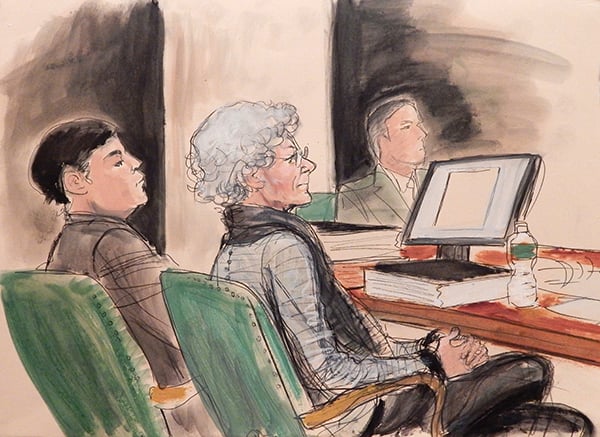
Despite its age and reputation, New York gallery Knoedler & Company was, for its seventeen final years, not a profitable enterprise apart from its sale of fake artworks, according to the testimony of an accountant on the stand Friday at the fraud trial of the gallery and its former director, Ann Freedman.
This concludes the second week of the trial, which is taking place at US District Court in Lower Manhattan.
Over fifteen years, from 1994 to 2009, the gallery sold fake paintings by Jackson Pollock, Mark Rothko, and other artists that had been brought to the gallery by Long Island art dealer Glafira Rosales, who pleaded guilty to fraud in 2013 and is awaiting sentencing.
In 2004, the plaintiffs in the current case, Eleanore and Domenico De Sole, purchased a fake Rothko for $8.3 million from Freedman, who insists she was duped by Rosales. The De Soles believe she knew the paintings were fakes. When their suit and others came to light, the gallery abruptly shuttered after 165 years in business.
The testimony of accountant Roger Siefert, under questioning by the De Soles’ lawyers, provided a fascinating glimpse into the gallery’s closely-guarded finances. Hired by the De Soles’ lawyers and in the business since 1984, Siefert specializes in forensic accounting.
Among the conclusions in Siefert’s report, which focused on, in his words, the gallery’s core business of buying and selling artworks during the seventeen years it was selling the works brought to it by Rosales:
Overall, the gallery’s net income from the sale of the Rosales paintings was $69.8 million. The gallery’s profits totaled $43.2 million. Of that, Freedman got $10.4 million.
During those 17 years, apart from the Rosales sales, the gallery lost $3.2 million, and it didn’t make a profit of more than $1.75 million in any of the 17 years under investigation.
Freedman got a raise in 1998 from $278,460 to $300,000, with her share of the gallery’s profits increasing from 10 percent to 15 percent that year. In 2002, her share of the gallery’s profits was hiked from 16 percent to 25 percent. In 2008, that figure rose to 30 percent.
Which means that Freedman earned $1.9 million from the De Soles’ $8.3 million purchase of the fake Rothko.
According to Siefert’s accounting, the gallery booked losses of as much as $1.6 million a year during Freedman’s tenure, excluding income from the Rosales works. Its losses only grew after her 2008 departure, after which no more Rosales works were sold: $2.3 million in 2009, $1.6 million in 2010, and $2.3 million in 2011, when the gallery closed without warning.
Knoedler paid art historian E.A. Carmean, who was on contract with the gallery, amounts as high as $78,000 a year for research the gallery hoped would substantiate the backstory Rosales had supplied for the paintings, which involved a secretive Swiss collector who may or may not have been the lover of art dealer David Herbert, who supposedly acted as an intermediary with the artists.
On cross-examination, Knoedler’s lawyers then aimed to pick apart Siefert’s report, arguing that it should have reflected the gallery’s $18.7 million sale of its East 70th Street building in 2011.
“The $18 million would cover a lot of the sin,” Siefert conceded, while reiterating that real estate was outside the scope of his report.
The gallery’s lawyer additionally cited numerous costs the gallery paid to conservators and art historians to investigate the paintings, as well as lawyer fees and other expenses, arguing they should have been included in Siefert’s accounting.
Completing testimony that he started on Thursday was art conservator James Martin, who examined the Rosales works for Knoedler and later for the FBI.
During cross-examination, Martin testified that in examining sixteen of the Rosales works, he found some of the same paints in works supposedly painted in various years by different artists.
But didn’t you examine them after you knew that lawsuits had been brought, asked Knoedler lawyer Charles Schmerler?
“I had received a lot of subpoenas and spent a lot of sleepless nights,” Martin said.
Schmerler challenged the art conservator on how knowledgeable he is in Jackson Pollock’s works, asking whether Pollock had created more than, say, two hundred.
“I hope so, because otherwise there are a lot of fakes out there,” Martin said, to laughs from the courtroom.
Martin went on to testify that the splatters of paint across various canvases were among the factors that led him to believe they were fake.
“It didn’t seem likely to me that in the ‘hermetically sealed’ environment Freedman said the works were kept in, that there were people walking around splattering red paint,” he said. “I’ve never seen paint splattered from one painting to another. That would be more akin to an auto body shop.”